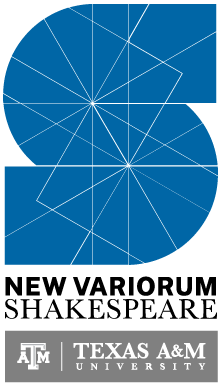Current Projects

The Carlyle Letters Online, originally launched on 14 September 2007, is the electronic version of Duke-Edinburgh edition of The Collected Letters of Thomas and Jane Welsh Carlyle, published by Duke University Press since 1970 and recently completed with the publication of volume 50. In addition to featuring the letters published in the print edition, the site also features materials such as the Carlyles' photo albums, and the collection held at Duke's Rubenstein Rare Books Library, and will soon include images of the letters found too late for publication in the print edition, as well as undated letters.
Researcher and Developer: Dr. Bryan Tarpley
 Corpora is "a dataset studio for the Digital Humanities." It's billed as such because it allows scholars with little to no programming experience to create a data schema for their digital projects (referred to as a "corpus"). Once that schema is created, data can immediately be created according to that schema via dynamically generated web forms, giving their corpus a backend that can be populated collaboratively. Aside from allowing data to be collected, Corpora also has a "baked-in" API (also dynamically generated) that then allows independent website frontends (or any computational tool) to browse, search, and explore the data in their corpus.
Corpora is "a dataset studio for the Digital Humanities." It's billed as such because it allows scholars with little to no programming experience to create a data schema for their digital projects (referred to as a "corpus"). Once that schema is created, data can immediately be created according to that schema via dynamically generated web forms, giving their corpus a backend that can be populated collaboratively. Aside from allowing data to be collected, Corpora also has a "baked-in" API (also dynamically generated) that then allows independent website frontends (or any computational tool) to browse, search, and explore the data in their corpus.
Beyond acting as backend data storage, Corpora is architected in such a way as to allow for plugins to be developed that drastically broaden its capacity. Examples include the ability to OCR documents en-masse with Tesseract or Google Cloud Vision, the ability to perform natural language processing tasks, etc. Plugins also serve as a way to containerize custom content types and code to support specific projects, like the plugins for the Advanced Research Consortium, The New Variorum Shakespeare, The Carlyle Letters Online, and The Maria Edgeworth Letters Project.
Faculty Principal Investigator: Dr. Susan Egenolf
 The NEH-funded Maria Edgeworth Letters Project is a collaborative, open-access digital edition of letters written by the Anglo-Irish novelist and educational writer Maria Edgeworth (1768-1849) and shared by over 30 archives around the world. Letters will be posted in raw text, TEI encoded, and, in most cases, accompanied with a photograph of the manuscript letter pages. The project is led by editors Jessica Richard (Wake Forest University), Hilary Havens (University of Tennessee), Robin Runia (Xavier University of Louisiana), and Susan Egenolf (Texas A&M). We've completed the first stage of our crowd-sourced transcriptions at Maria Edgeworth Letters | Zooniverse.
The NEH-funded Maria Edgeworth Letters Project is a collaborative, open-access digital edition of letters written by the Anglo-Irish novelist and educational writer Maria Edgeworth (1768-1849) and shared by over 30 archives around the world. Letters will be posted in raw text, TEI encoded, and, in most cases, accompanied with a photograph of the manuscript letter pages. The project is led by editors Jessica Richard (Wake Forest University), Hilary Havens (University of Tennessee), Robin Runia (Xavier University of Louisiana), and Susan Egenolf (Texas A&M). We've completed the first stage of our crowd-sourced transcriptions at Maria Edgeworth Letters | Zooniverse.
Digital Editor: Dr. Katayoun Torabi
Associate Digital Editors: Dr. Kris May | Dr. Dorothy Todd
 The New Variorum Edition of Shakespeare (NVS), which began with the publication of Romeo and Juliet in 1871, is now published open-access in digital form, beginning with two editions, The Winter’s Tale and A Midsummer Night’s Dream. The digital NVS has been designed with three main goals in mind: 1) to teach students and early career researchers the concepts behind variorum editing through interface design as well as tutorials; 2) to enable searching across and within volumes and variants using Modern English and major Act-Scene-Line numbers; and 3) to be interoperable with, and allow access to, other major Shakespeare digital resources including bibliographies of criticism, digital copies of editions published since Shakespeare’s time, images, and videos (set for third-phase development). Following the practice of state-of-the-art digital humanities projects, we aim to render Shakespeare’s texts and international criticism available world-wide.
The New Variorum Edition of Shakespeare (NVS), which began with the publication of Romeo and Juliet in 1871, is now published open-access in digital form, beginning with two editions, The Winter’s Tale and A Midsummer Night’s Dream. The digital NVS has been designed with three main goals in mind: 1) to teach students and early career researchers the concepts behind variorum editing through interface design as well as tutorials; 2) to enable searching across and within volumes and variants using Modern English and major Act-Scene-Line numbers; and 3) to be interoperable with, and allow access to, other major Shakespeare digital resources including bibliographies of criticism, digital copies of editions published since Shakespeare’s time, images, and videos (set for third-phase development). Following the practice of state-of-the-art digital humanities projects, we aim to render Shakespeare’s texts and international criticism available world-wide.
Faculty Principal Investigator: Dr. Daniel L. Schwartz
 Syriaca.org: The Syriac Reference Portal is a digital project for the study of Syriac literature, culture, and history. Today, a number of heritage communities around the world have linguistic, religious or cultural identities with roots in Syriac language and culture. Syriaca.org exists to document and preserve these Syriac cultural heritages. The online tools published by Syriaca.org are intended for use by a wide audience including researchers and students, members of Syriac heritage communities and the interested general public. In order to meet the diverse needs of users, the design of Syriaca.org is inherently collaborative and fluid. The principle objectives are threefold: 1) to compile and organize core data related to the study of Syriac sources; 2) to create digital tools for widely disseminating this data and facilitating further research; 3) to create an online hub (cyberinfrastructure) to assist future research in the field of Syriac studies.
Syriaca.org: The Syriac Reference Portal is a digital project for the study of Syriac literature, culture, and history. Today, a number of heritage communities around the world have linguistic, religious or cultural identities with roots in Syriac language and culture. Syriaca.org exists to document and preserve these Syriac cultural heritages. The online tools published by Syriaca.org are intended for use by a wide audience including researchers and students, members of Syriac heritage communities and the interested general public. In order to meet the diverse needs of users, the design of Syriaca.org is inherently collaborative and fluid. The principle objectives are threefold: 1) to compile and organize core data related to the study of Syriac sources; 2) to create digital tools for widely disseminating this data and facilitating further research; 3) to create an online hub (cyberinfrastructure) to assist future research in the field of Syriac studies.
Grant funds from the National Endowment for the Humanities (NEH) will advance these endeavors for expanding the Syriac corpus through a new project, “Linking Texts and Data from the Medieval Middle East: Next-Generation Discovery and Access Tools for Syriac Cultural Heritage”, set to start in the Fall.
Digital Syriac Corpus
Digital Syriac Corpus is a curated digital repository of TEI encoded texts written in classical Syriac. The interface provides effective browse and search functionality. Individual texts may be downloaded to facilitate publishing projects, such as the production of critical editions, and research, such as more advanced corpus linguistic analysis. We invite users to submit corrections and to contribute digital texts.
The Srophé App
The Srophé App is an open source database designed to support digital humanities research in the history of culture. Srophé [pronounced, Srō-Fay] is an eXist-DB application which enables researchers to encode and link historical data, with a focus on texts, persons, geography, events, and material artifacts. The Srophé App was created as the digital publication platform for Syriaca.org: The Syriac Reference Portal and thus its original use case was pre-modern cultural heritage data associated with the Syriac language (a dialect of Aramaic).
Faculty Principal Investigator: Dr. Tianna Helena Uchacz
 In July 2021, in collaboration with the University Art Galleries, collectors and authors Bill and Linda Reaves launched the Texas Art Project. The Texas Art Project promotes the history and legacy of art in Texas through a major art donation, series of exhibitions, and pedagogical initiatives that draw on art collections across the state. TAMU was chosen as a collaborator for the Texas Art Project due to its land grant mission. Additionally, the permanent collection of the J. Wayne Stark Galleries focuses on American paintings, prints, drawings, and photographs of the 19th and 20th centuries, with a strong emphasis on Texas art; Texas A&M University Press publishes the Joe and Betty Moore Texas Art Series, and PVFA offers a course on Texas Art History (ARTS 329).
In July 2021, in collaboration with the University Art Galleries, collectors and authors Bill and Linda Reaves launched the Texas Art Project. The Texas Art Project promotes the history and legacy of art in Texas through a major art donation, series of exhibitions, and pedagogical initiatives that draw on art collections across the state. TAMU was chosen as a collaborator for the Texas Art Project due to its land grant mission. Additionally, the permanent collection of the J. Wayne Stark Galleries focuses on American paintings, prints, drawings, and photographs of the 19th and 20th centuries, with a strong emphasis on Texas art; Texas A&M University Press publishes the Joe and Betty Moore Texas Art Series, and PVFA offers a course on Texas Art History (ARTS 329).
Partnering with CoDHR to leverage the expertise and resources in the DH community was a natural step for the project. As a proof-of-concept for a collaboration, a small, self-contained subset of Texas Art was chosen: the oeuvre of Buck Schiwetz, who was an A&M faculty member and subject of a major Texas Art Project exhibition at the Stark Galleries (September 21 to December 16, 2023) that will travel across Texas until January 2025. Longer-term intentions are to build a broader, public-facing database of Texas art, drawing on works in public and private collections, facilitated by the Corpora database. Future iterations of ARTS 329 would have major projects dedicated to populating the database and documenting the works via archival research.
Faculty Principal Investigator: Dr. Laura Mandell

The Advanced Research Consortium (ARC) is an overarching organization that provides support, coordination, and a set of evolving standards for five period-specific virtual research environments (VREs), or nodes. As a hub of humanities research nodes, ARC contains resources spanning the bulk of existing Western written documents, from medieval times to the early 20th century. Each ARC node contains data about existing documents, scanned page images (with text transcriptions), scholarly research related to the node’s documents, and teaching and research tools, including open-source software, that helps humanities researchers to work with digital text and images. ARC coordinates the various resources of the nodes, combining them into a single catalog of metadata, images, and texts, and the ARC nodes provide peer-review for research projects derived from the ARC resources.
BigDIVA
 BigDIVA (Big Data Infrastructure Visualization Application) is a dynamic environment for browsing, searching, and interacting with the ARC (Advanced Research Consortium) catalog. This interface allows users to view all their search results at once rather than paging through endless lists of returns and hoping the search engine has put the most relevant items towards the top.
BigDIVA (Big Data Infrastructure Visualization Application) is a dynamic environment for browsing, searching, and interacting with the ARC (Advanced Research Consortium) catalog. This interface allows users to view all their search results at once rather than paging through endless lists of returns and hoping the search engine has put the most relevant items towards the top.
TypeWright
 TypeWright is a tool for correcting the text-version of a document made up of page images. These text versions are crucially necessary: they are what enables full-text searching, datamining, preserving, and curating texts of historical importance. Right now, the text running behind the page images of these texts has been mechanically typed, leaving behind errors that need to be corrected by human eyes and hands. TypeWright is a tool supported and maintained by 18thConnect.
TypeWright is a tool for correcting the text-version of a document made up of page images. These text versions are crucially necessary: they are what enables full-text searching, datamining, preserving, and curating texts of historical importance. Right now, the text running behind the page images of these texts has been mechanically typed, leaving behind errors that need to be corrected by human eyes and hands. TypeWright is a tool supported and maintained by 18thConnect.
Researcher: Dr. Britt Mize
 The purpose of The Beowulf's Afterlives Bibliographic Database is to offer the most complete and correct documentation of Beowulf representations, versions, and adaptational engagements from their modern beginnings—in Humphrey Wanley's transcription of two segments of the poem in 1705—through the present. The range of materials is defined inclusively, extending from the most conservative reproductions, such as photographic facsimiles and manuscript transcriptions; to academic mediations, like editions of the Old English text and traditional translations; to all types of freer adaptations and remakings that refashion Beowulf or salient elements of it into new creative works, such as novels, lyric poems, plays, comic books, and films. The BABD covers works in all languages, genres, and media forms.
The purpose of The Beowulf's Afterlives Bibliographic Database is to offer the most complete and correct documentation of Beowulf representations, versions, and adaptational engagements from their modern beginnings—in Humphrey Wanley's transcription of two segments of the poem in 1705—through the present. The range of materials is defined inclusively, extending from the most conservative reproductions, such as photographic facsimiles and manuscript transcriptions; to academic mediations, like editions of the Old English text and traditional translations; to all types of freer adaptations and remakings that refashion Beowulf or salient elements of it into new creative works, such as novels, lyric poems, plays, comic books, and films. The BABD covers works in all languages, genres, and media forms.
Researcher: Alexandra E. LaGrand
 Points Like A Man: The Shakespearean Breeches Performance Catalogue curates records of major performances of Shakespearean breeches and disguise roles by women from 1660-1900. This project began by focusing on performances by actresses in London, but has since grown to collect records of breeches performances from around the world. Breeches roles are male character roles played by women actresses, and disguise roles are female character roles, played by women actresses, that disguise themselves as men during the play. Shakespeare plays are particularly rife with these kinds of roles, and the period between 1660-1900 can be considered a golden age in theatre history for these kinds of roles.
Points Like A Man: The Shakespearean Breeches Performance Catalogue curates records of major performances of Shakespearean breeches and disguise roles by women from 1660-1900. This project began by focusing on performances by actresses in London, but has since grown to collect records of breeches performances from around the world. Breeches roles are male character roles played by women actresses, and disguise roles are female character roles, played by women actresses, that disguise themselves as men during the play. Shakespeare plays are particularly rife with these kinds of roles, and the period between 1660-1900 can be considered a golden age in theatre history for these kinds of roles.
